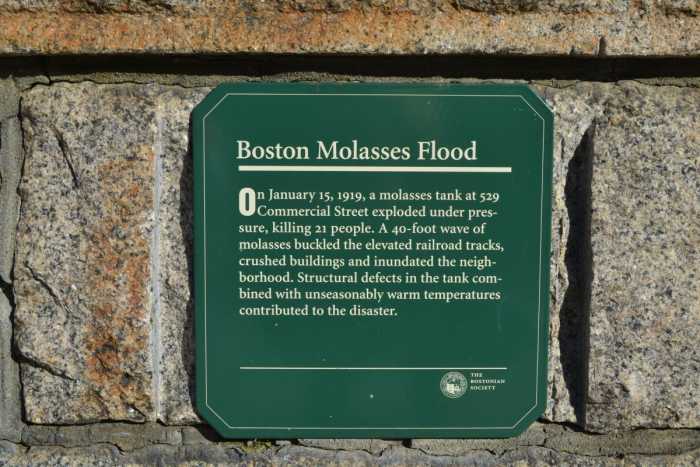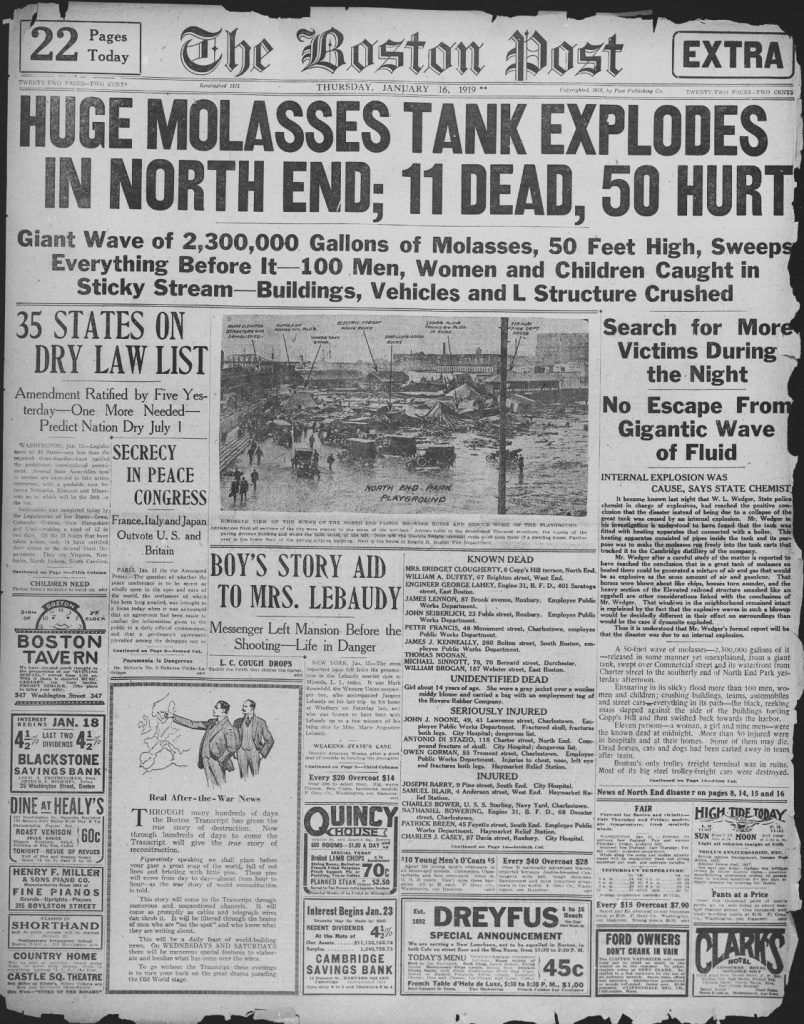

The owner of the faulty tank was the Purity Distilling Company.

The incident reveals some fascinating fluid dynamics, according to a presentation at the annual meeting of the APS Division of Fluid Dynamics in November 2016. The title was so spot-on, we’ve used it (at least) twice, and probably will again.One of the strangest historical tragedies of 20th century America is the Great Boston Molasses Flood of 1919, when tons of treacle from a burst storage tank coursed through the city’s streets. Length of time that Boston Harbor ran brown with molasses: Six months Excerpts from “How Slow is Molasses in January?,” Yankee Magazine, January 19. Sum that the Purity Distilling Company paid in damages to the 125 people who filed suit: Over $1 million Number of people who died of drowning or suffocation in the molasses flood: 21 Gallons of molasses that flooded the North End on January 15, 1919: 2.3 millionĮstimated height of the wave of molasses: 30 feetĮstimated speed of the wave of molasses: 25 miles per hour Photo Credit : Boston Public Library/Public Domain GREAT MOLASSES FLOOD | FAST FACTS Wreckage of the collapsed molasses tank is visible in the background, center, next to light colored warehouse. Photo Credit : Courtesy of the Boston Public Library, Leslie Jones Collection. Local residents claim that on a steamy summer night you can still smell the sweet aroma of molasses.īoston elevated twisted into new shapes, after Molasses Disaster. In all, 11 people were killed and more than 50 injured by the initial explosion.Ī playground and baseball field presently occupy the site of the blast. Scores of buildings, vehicles and bystanders were swept away. The city paving department office and stable were erased within seconds, killing five men and a number of horses. A five-ton Mack truck was picked up by the wave of molasses and slammed into a building. On the waterfront, Boston Fireboat #31 was sunk at its dock with loss of life. The Bay State Street Railway freight depot and several motorized boxcars were destroyed. Firemen standing in thick molasses after the disaster. 1:00pm Photo Credit : Courtesy of the Boston Public Library, Leslie Jones Collection. Photo Credit : The Bostonian Society/Old State House/Public Domain Fire House no. Photo Credit : Public Domain A “before” shot of the molasses tank in an undated photo. The front page of the Boston Post on January 16, 1919. A quick-thinking motorman, seeing the rail disappear ahead of the train, dashed to the rear car and, with the steel wheels spinning, managed to get it headed in the opposite direction. The metal latticework of the Boston Elevated Railway Company’s Altlantic Avenue line, running above Commercial Street, was struck by a large chunk of the shattered tank. “It was like someone was on the inside hammering to get out,” said one witness.Ī massive tidal wave of molasses swept across Commercial Street, smashing into a house at 6 Copps Hill Terrace, demolishing the building and killing Mrs. Those nearby who survived the ensuing catastrophe reported strange noises coming from the tank just before it let go. It was just after noon on January 15 when the great molasses tank exploded with a ground-shaking blast. A solitary vent was the only outlet for the fermenting gases. Pipes entering the tank were heated to aid the flow of the dense liquid. The company’s huge iron tank along the water’s edge at 529 Commercial Street in the North End was filled with more than two million gallons of molasses. In January of 1919 Purity Distilling Company of Boston, maker of high-grade rum, was working three shifts a day in a vain attempt to outrun national Prohibition. Section of tank after Great Molasses Flood explosion.


 0 kommentar(er)
0 kommentar(er)
